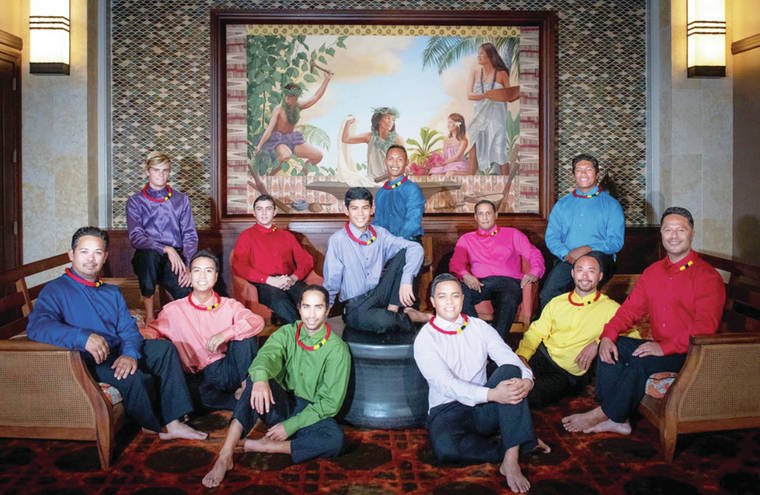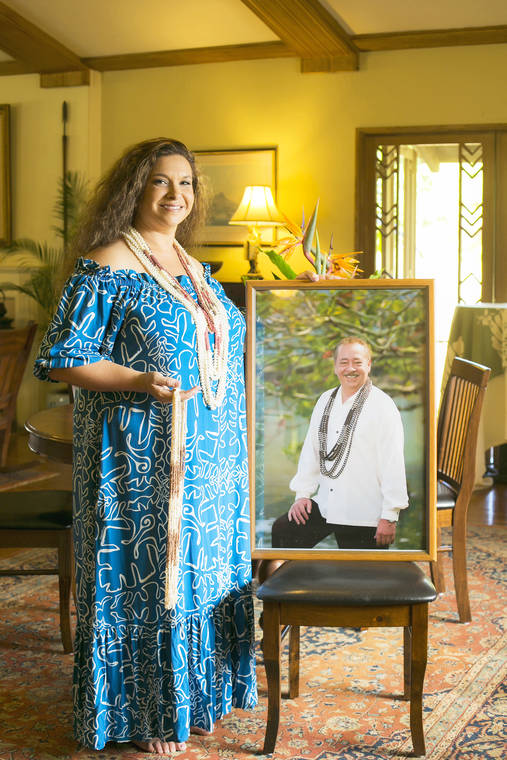For the first time, kumu Leina‘ala Pavao Jardin’s Halau Ka Lei Mokihana O Leina‘ala is sending their kane (men) to the Merrie Monarch Festival in April.
Halaus from different islands, states and countries meet in Hilo to showcase their hula skills, traditions and culture.
Although this is the halau’s ninth year, it will be the first for their kane participation. The halau is known for its “chicken skin” performances and is supported by the Kauai hula community.
Pavao Jardin said it is all about honoring the kumu that came before them — the ones who taught her how to emerge in the hula and equip others with the same teachings she grew up with.
This is a special year 2020.
“My kumu was Ray Fonseca and he passed away 10 years ago, and so we honor him and all my kumus. I danced almost my entire life here on Kauai with Aunty Lovey Apana. When I was tiny, I danced with kumu Ku‘ulei Punua. I’ve been blessed to learn from different kumu. But when I went to college, kumu Ray Fonseca gave me my blessings to be a kumu,” said Pavao Jardin.
The men are excited and have been preparing for months. If there is one thing that Fonseca taught Pavao Jardin, it would be to do everything for themselves.
“We rarely buy anything. If we can we sew our costumes. We make our leis and implements. Or like the feather lei,” said Pavao Jardin. “You know, my students are required to make their own feather leis. You know you can do anything you put your mind to, and it gives you a sense of pride knowing you made it.”
Kane dancer Kawika Lovell-Kuali‘i shared his thoughts after hearing the news that he would be heading to Hilo: “I am super excited and nervous at the same time.”
To be the pioneer and make history for Kauai is a huge honor for these men. They will be joining their hula sisters traveling to Hilo from April 12 to 18. They will be dancing two mele (songs) taught to Pavao Jardin by Fonseca. They are in the competition for one kahiko and one auana award.
Pavao Jardin said hula is more than just a dance. She wants the kane to come back with an understanding of how deep hula goes.
“It is not just a hobby. It’s really immersing your life and soul. And the benefits is number one is that you connect with your aina, with your birthplace. That I think is so special and important. Number two is the discipline, the respect, the aloha. There is so many different things they can learn. I already see them growing.”
“The women of our halau have been through this journey. And the Merrie Monarch is not the only thing we do in our halau,” said Pavao Jardin. “But it is a significant time. It pushes you to take our hula to an even greater level and understanding of the hula. It is not just a performance.”
While making sure her halau becomes one with discipline and love for each other, they are working on becoming one with the song. The men will be dancing about Kauai, their hula and the kahiko. During the seven minutes, she would like the men not to feel like they are there on stage, but back home.
The men are encouraged from the start to dig into the song before learning the words. They do their research and then they go to the location of that song. They become one with that song that they are dancing about.
“The people back home should be able to feel their love for Kauai through their hula, even if they are not there in person,” she said. “Becoming one with the songs they dance and honoring their kumus will help them honor their families, their kumu and their island.”
There are seven judges that judge Merrie Monarch each year, but to Pavao Jardin there is one judge she keeps in mind.
“My biggest judge to me are my kumu. So if kumu Ray was here today and he would say that was maika‘i, that would mean the world to me. I always tell them that’s our goal, to keep his legacy going,” she said.






